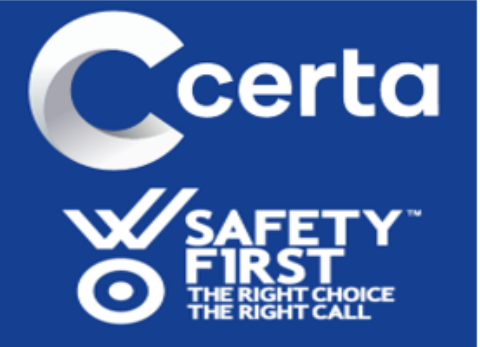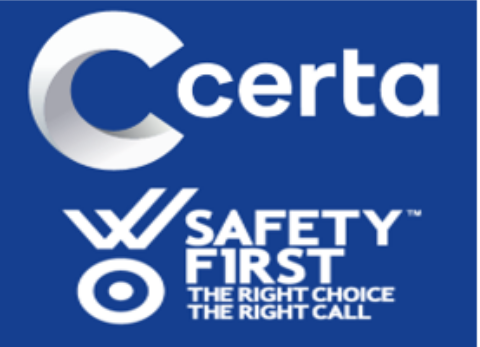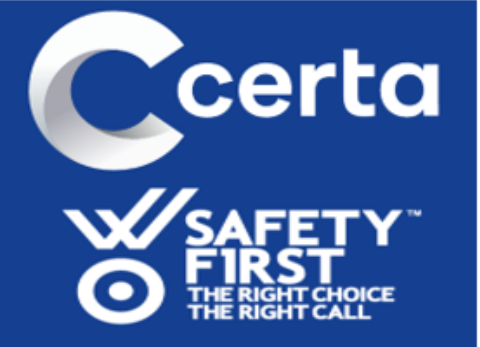Information
-
Site
-
Conducted on
-
Prepared by
-
Location
Management Controls
-
Check employers and public liability insurance certificates are valid
-
Have appropriate signs/notices been erected around the site i.e. mandatory use of PPE, Incomplete Scaffolds, No Smoking, Traffic Management, Fire assembly, Fist Aid Points etc.
-
Have all contractors been inducted
-
Ensure all site operatives, including sub-contractors have necessary training records
Access and Egress
-
Is there safe access and egress to all working areas of the site?
-
Have pedestrian walkways been provided to protect them from moving vehicles?
-
Are walkways free from obstructions and stored materials?
-
Are access routes adequatelly lit?
Access - External
-
Ensure site access points are clearly signposted on the approaches to the site.
-
Ensure that adequate lighting is provided, including flashing amber warning beacons where appropriate.
-
Ensure any floodlights do not dazzle drivers on the site or on adjacent public/private roads.
-
Ensure any lighting does not cause a nuisance to local residents.
-
Ensure that there is always a clear access route to and from all parts of the site.
-
Have access routes been agreed with the fire and other emergency services prior to the start of works.
-
Ensure the approaches to the site are kept clear of site traffic.
-
If necessary has the use of traffic lights to control traffic around site entrances been considered?
-
Ensure approach roads are kept clean and tidy and that any debris is removed promptly.
-
Ensure there are suitable barriers and warning notices to keep members of the public separated from the site works and site traffic.
-
Ensure safe pedestrian access is provided across all site entrances.
-
Ensure the site is securely fenced at all times to prevent unauthorised access.
-
Ensure all public access routes are kept clean and clear at all times.
-
Ensure adequate signage is provided to direct members of the public.
Electrical Equipment
-
Ensure that existing services e.g.: electricity cables, gas mains etc have been identified and effective steps have been taken to prevent danger from them.
-
Check that low voltage tools and equipment are being used wherever possible.
-
Check that only 110v CTE hand tool etc are in use.
-
Check that cables and leads are protected from damage.
-
Check that tools and equipment are visually checked and regularly inspected/tested by a competent person. (PAT)
-
Ensure that cables and trailing leads are not trip hazards.
Excavations/Earthworks
-
Ensure that checks are made to determine the presence of any buried services before and during all excavation works.
-
All excavations should be carried out in accordance with a detailed method statement
-
Check that there is adequate support and propping for the excavation, or whether it has been sloped or battered back to a safe angle.
-
Check that there is a safe method used for placing supports, without the need for operatives to work in an unsupported trench.
-
Check that there is safe access into the excavation
-
Check that barriers or other protection to stop people/vehicles falling in are in place.
-
Does the excavation affect the stability of neighbouring structures or services.
-
Ensure that materials, spoil and plant is stored away from the edge of the excavation to reduce the chance of collapse.
-
Ensure that the excavation is regularly inspected by a competent person and that a record of such inspections is maintained.
First Aid
-
Are Additional suitably qualified persons available to ensure adequate first aid provision is provided.
-
Ensure the first aid kit contains only first aid materials.
-
The location of the first aid box should be indicated on the site notice board and the door of the room in which it is contained. Are they clearly indicated?
-
The First Aid box should be;
-
Marked with a white cross on a green background.
-
Be placed where it can be seen and used.
-
Be checked and replenished on a regular basis.
Housekeeping
-
Ensure Debris is not be allowed to collect around the site.
-
Ensure materials are stored in an appropriate manner so as not to cause damage to or a weakening of the material.
-
Are All hazardous/flammable liquids contained within a bundled area/tank?
Lifting Operations/Equipment
-
Ensure a (competent) Appointed Person co-ordinates all lifting operations.
-
Have all lifting operation got a valid lifting plan?
-
Ensure that all lifting equipment has been tested and installed by a competent person and is regularly maintained and inspected.
-
Check that the operators are trained and competent.
-
Check that the rated capacity/safe working load is clearly marked.
-
Ensure that the lifting equipment is capable of lifting the heaviest component within the anticipated working radius - allow for sufficient spare capacity.
-
Ensure that cranes and other lifting equipment has sufficient space to operate safely.
-
All lifting equipment should have a thorough examination every 6 months.
-
Ensure lifting operations do not take place near overhead power lines and excavations.
Mobile Scaffold Towers
-
Check that proprietary tower scaffolds have been erected and are being used in accordance with the suppliers instructions.
-
Check that the wheels of any tower scaffold have been locked when in use and check that the platform is empty when being moved.
-
Are they tagged safe for use?
Personal Protective Equipment (PPE)
-
PPE General Requirements - Ensure PPE compatibility issues have been considered and that one piece of PPE not restrict the effectiveness of another piece of PPE.
-
Ensure that it is suitable for the type of work being undertaken.
-
Check that it is kept in good condition.
-
Ensure all staff and visitors are wearing Hi-Viz vests or jackets.
Plant & Equipment
-
Ensure that tools and equipments are stored correctly to avoid damage to the equipment and persons.
-
Dry, covered and secure storage areas should be provided for all tools and equipment.
-
Hand tools
-
Ensure that the right tools and equipment are being used for the right job.
-
Were all hand tools found to be in good condition with no defects?
-
Power Tools
-
Ensure operatives have been trained to use the tools/equipment they are using.
-
Check that all dangerous parts are guarded e.g. gears, chain, drives, projecting engine shafts etc.
-
Check that guards are secure and in good repair.
-
Check the supply cable for cuts, splits or other damage. All all cables free from damage?
-
Ensure that all operators are trained and competent.
-
Plant
-
Ensure all Plant and Machinery is inspected on a weekly basis by a competent person and recorded in a Plant Inspection Register.
-
Are all plant operators trained and hold a valid plant operators card for the categories being operated?
-
Is Plant Used Correctly.
Scaffolding/Working platforms
-
Check that any scaffold erection, alteration or dismantling is carried out by a competent person.
-
Check that all standards are provided with base plates and timber sole boards which span at least two base plates.
-
Check that all standards, ledgers, braces and struts are in position.
-
Ensure that the scaffold is adequately tied to the building or structure to prevent collapse.
-
Check that double guard rails and toe boards or other suitable protection at every edge.
-
Check that there are additional brick guards provided to prevent materials falling from scaffold where they are used as a working platform.
-
Check that working platforms are fully boarded and that the boards are arranged to avoid tipping or tripping - i.e.: no overlapping boards.
-
Do all ladder accesses have self closing gates fitted?
-
Ensure that there are effective warning notices in place to stop any person using an incomplete scaffold.
-
Check that the scaffold is strong enough to carry the weight of materials stored on it and that they are evenly distributed.
-
Ensure that the scaffold has been properly maintained.
-
Ensure that a competent person inspects the scaffold regularly, at least once a week; and always after it has been altered, damaged and following extreme weather.
-
Are scaffold tags being utilised?
-
Ensure that these inspections are adequately recorded.
-
Are all scaffolds and working platforms sutable?
Traffic Management
-
Has a traffic management plan been prepared?
-
Are traffic management arrangement suitable and sufficient ?
-
Are pedestrians segregated from moving vehicles and plant?
-
Does the site layout match the plan?
-
Are storage areas identified?
-
Are loading areas identified?
-
Have one way or turning points been identified?
Working at Height
-
Check whether the work can be undertaken without working at height.
-
Check that access equipment is erected by competent persons and checked before use.
-
Ensure safe access and egress have been provided to areas.
-
Roof Work
-
Ensure that edge protection is provided to stop people or materials falling.
-
Ensure that precautions have been taken to stop people falling through fragile materials when working on roofs, e.g.: by providing barriers, covers or working platforms.
-
Ensure roof ladders are used in accordance with best practice requirements.
-
Ensure that people are kept away from areas below the roof work.
-
Ladders - Ladders should be used at an angle of 1:4 (75 degrees).
-
Ensure that ladders are in good condition, are not split, warped or have damaged rungs etc.
-
Check whether ladders are suitable for the purpose - only for short term work or for gaining access to another area.
-
Check that ladders rest against a solid level surface and that this is not a fragile or insecure material.
-
Check that ladders are secured to prevent them slipping sideways or backwards.
Other
-
undefined











